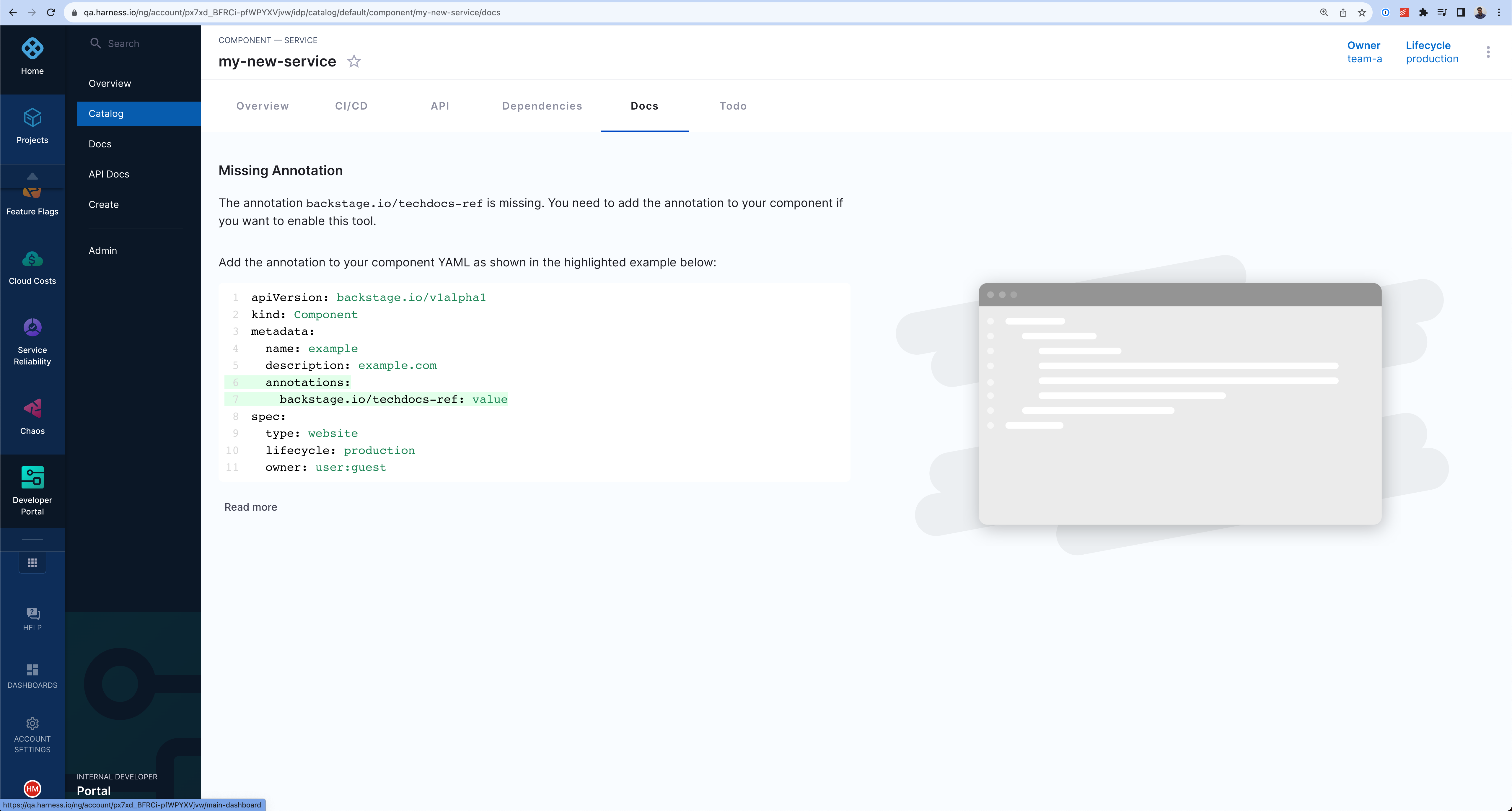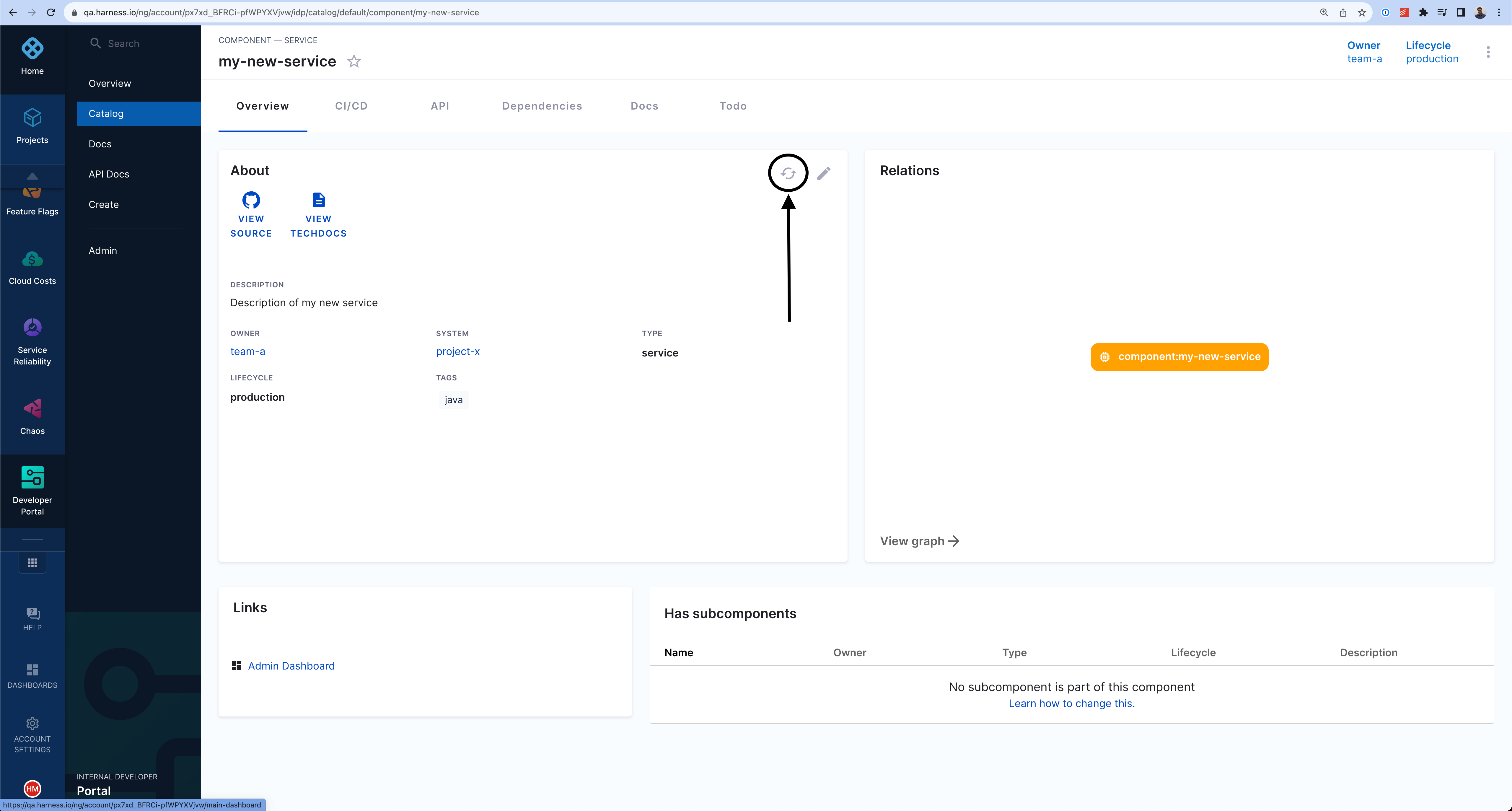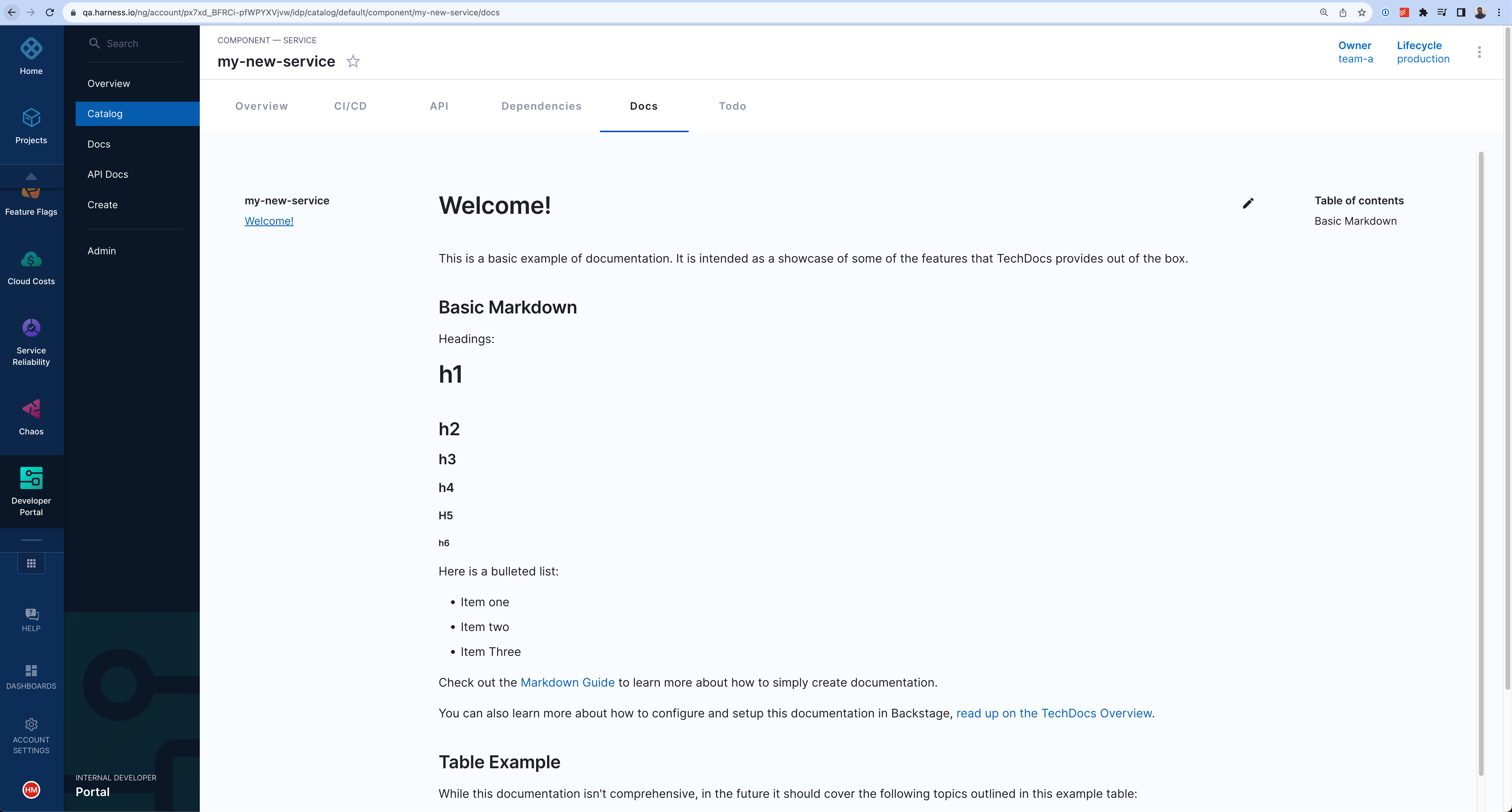Enable documentation for your Component
Now that you have added your Software Components in the Catalog, we need to add the documentation. By default, the Docs tab in your catalog does not include documentation for a new software component. However, you can quickly publish Markdown documentation to the Docs tab.
Techdocs is currently not supported with Harness Code Repo Integration

Docs in Harness IDP is powered by TechDocs Backstage Plugin and which currently is using MkDocs to generate the documentation from source, so the files have to be in Markdown format with a mkdocs.yml file present in the path provided.
- Docs Available in the Root of Source Folder
- Docs Available in Some Other Location
To add documentation:
- Create a
docsdirectory next to where you havecatalog-info.yaml. - Inside the
docsdirectory, create anindex.mdfile with the following contents.
# Welcome!
This is a basic example of documentation. It is intended to showcase some of the
features that TechDocs provides out of the box.
## Basic Markdown
Headings:
# h1
## h2
### h3
#### h4
##### h5
###### h6
Here is a bulleted list:
- Item one
- Item two
- Item Three
Check out the [Markdown Guide](https://www.markdownguide.org/) to learn more about how to
simply create documentation.
You can also learn more about how to configure and set up this documentation in Backstage,
[read the TechDocs Overview](https://backstage.io/docs/features/techdocs/).
## Table example
While this documentation isn't comprehensive, in the future it should cover the following
topics outlined in this example table:
| Topic | Description |
| ------- | ------------------------------------------------------------ |
| Topic 1 | An introductory topic to help you learn about the component. |
| Topic 2 | A more detailed topic that explains more information. |
| Topic 3 | A final topic that provides conclusions and lessons learned. |
## Learn more about MkDocs
TechDocs uses MkDocs as the static site generator. Visit https://www.mkdocs.org for more information about MkDocs.
-
Edit the
catalog-info.yamland add the TechDocs annotation. -
In the
metadata.annotationsfield, addbackstage.io/techdocs-ref: dir:..

When you seedir:., you can translate it to mean:
- That the documentation source code lives in the same location as the
catalog-info.yamlfile. - That, in particular, the
mkdocs.ymlfile is a sibling ofcatalog-info.yaml(meaning, it is in the same directory) - And that all of the source content of the documentation would be available if one were to download the directory containing those two files (as well as all sub-directories).
The directory tree of the entity would look something like this:
├── catalog-info.yaml
├── mkdocs.yml
└── docs
└── index.md
If, for example, you wanted to keep a lean root directory, you could place your mkdocs.yml file in a subdirectory and update the backstage.io/techdocs-ref annotation value accordingly, e.g. to dir:./sub-folder:
├── catalog-info.yaml
└── sub-folder
├── mkdocs.yml
└── docs
└── index.md
Please note dir:../. does not work in the above use case due to security reasons.
In situations where your TechDocs source content is managed and stored in a location completely separate from your catalog-info.yaml, you can instead specify a URL location reference, the exact value of which will vary based on the source code hosting provider. Notice that instead of the dir: prefix, the url: prefix is used instead. For example:
- GitHub:
url:https://githubhost.com/org/repo/tree/<branch_name> - GitLab:
url:https://gitlabhost.com/org/repo/tree/<branch_name> - Bitbucket:
url:https://bitbuckethost.com/project/repo/src/<branch_name> - Azure:
url:https://azurehost.com/organization/project/_git/repository
Note, just as it's possible to specify a subdirectory with the dir: prefix, you can also provide a path to a non-root directory inside the repository which contains the mkdocs.yml file and docs/ directory.
e.g. url:https://github.com/backstage/backstage/tree/master/plugins/techdocs-backend/examples/documented-component
-
Edit the
catalog-info.yamland add the TechDocs annotation. -
In the
metadata.annotationsfield, addbackstage.io/techdocs-ref: url:https://github.com/my-org/my-service/tree/master.
metadata:
annotations:
backstage.io/techdocs-ref: url:https://github.com/backstage/backstage/tree/master/plugins/techdocs-backend/examples/documented-component
- Select the refresh button on the catalog component page.

- Navigate to the Docs tab to review the documentation, which should become available shortly.
